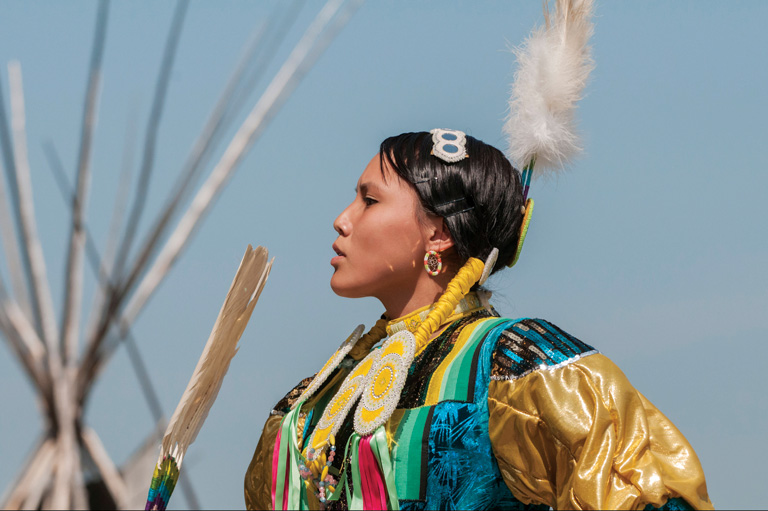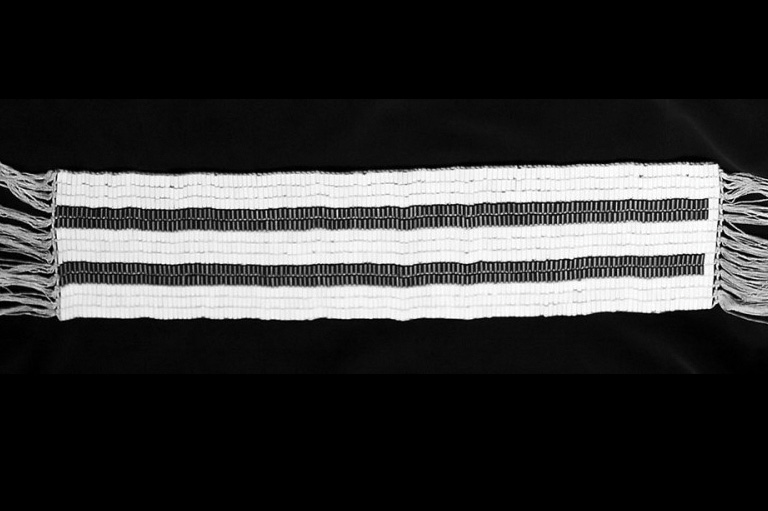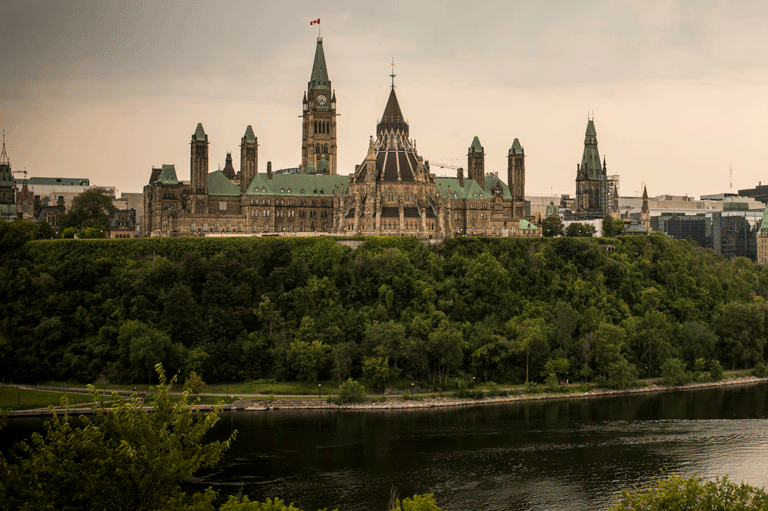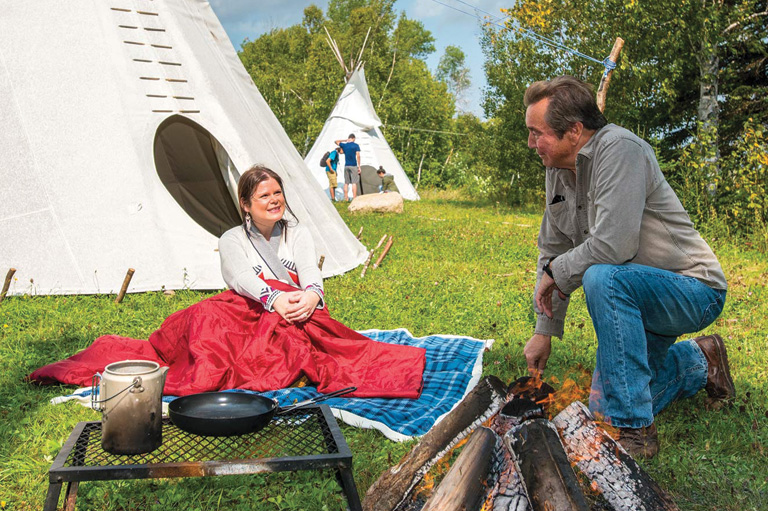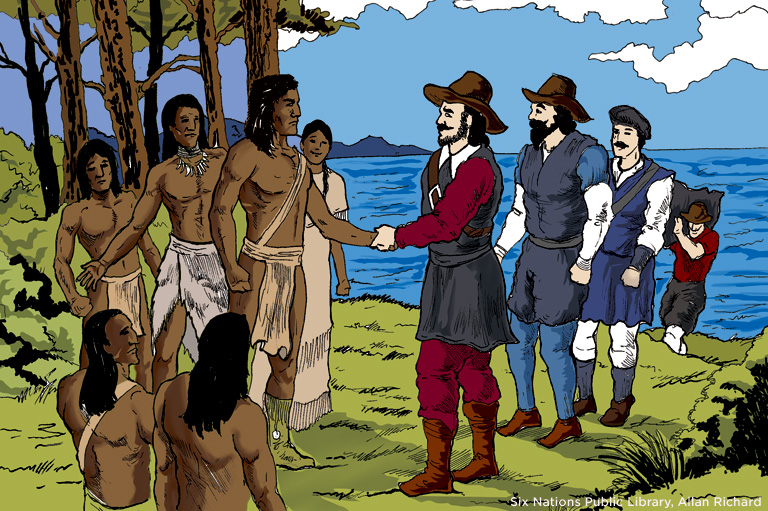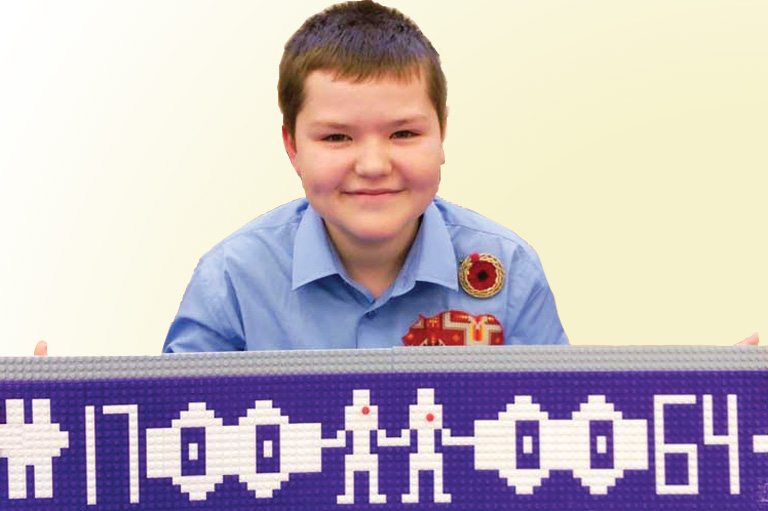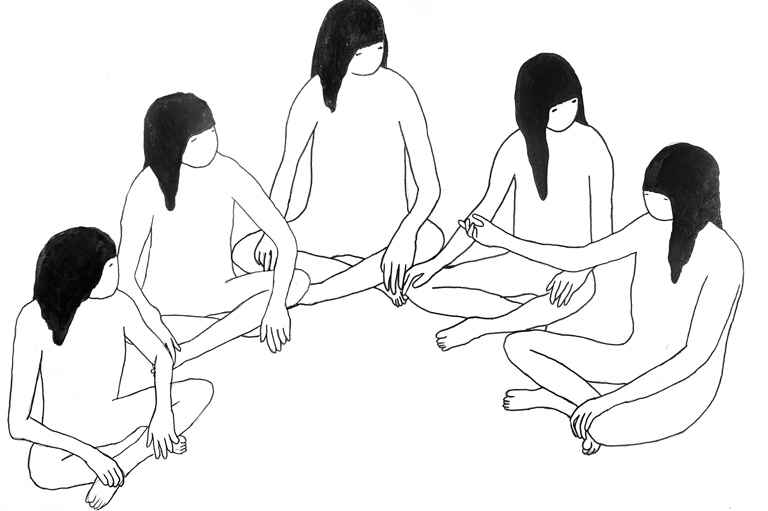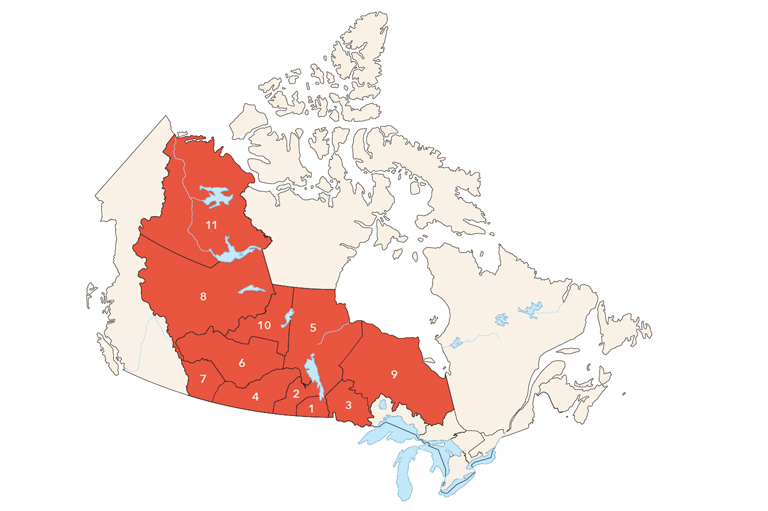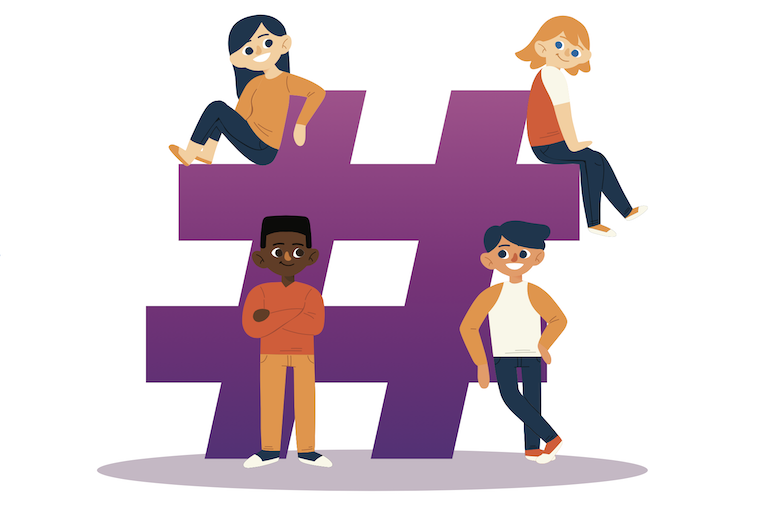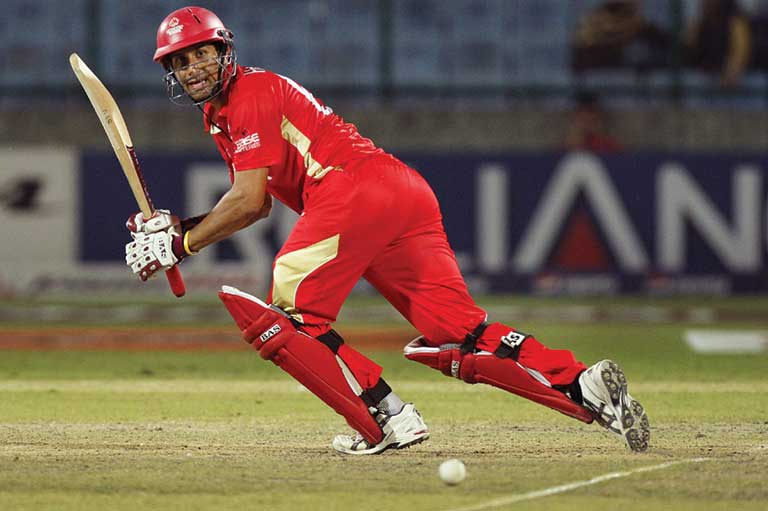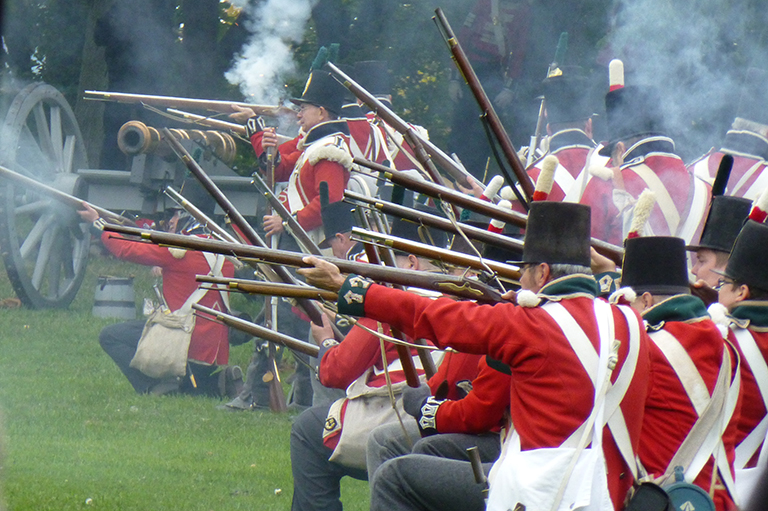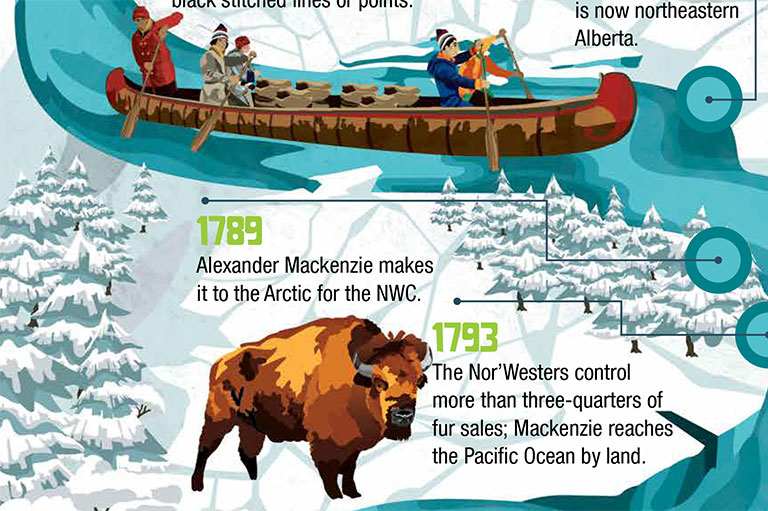Relationships
See “Gifts and Symbols” on pages 16 and 17 in the We Are All Treaty People issue of Kayak: Canada’s History Magazine for Kids.
Read “Shake on It“
This medal was given starting in 1873. It had an image of a First Nations leader shaking hands with a British officer on one side and a picture of Queen Victoria on the other. It was used until the death of the Queen in 1901. This one was made of pure silver.
Minds on
Explore the symbolism in the Treaty medal. Focus on the handshake, the symbols of Creation, the buried hatchet.
Hands on
Have students individually create a class medal symbolizing the relationship between students-students; teacher-students. Display the medals in the classroom for the duration of the year as a symbol of their relevance, guidance, and endurance.
More classroom activities
Themes associated with this article
Advertisement
You might also be interested in...
This issue, as well as the corresponding educational resource package, can be found on the French side of our site.

Encouraging a deeper knowledge of history and Indigenous Peoples in Canada.
The Government of Canada creates opportunities to explore and share Canadian history.

The Winnipeg Foundation — supporting our shared truth and reconciliation journey.

We contribute to the well-being of the communities we serve through grants, scholarships, sponsorships, fundraising, volunteering and collaborative relationships with community partners.

